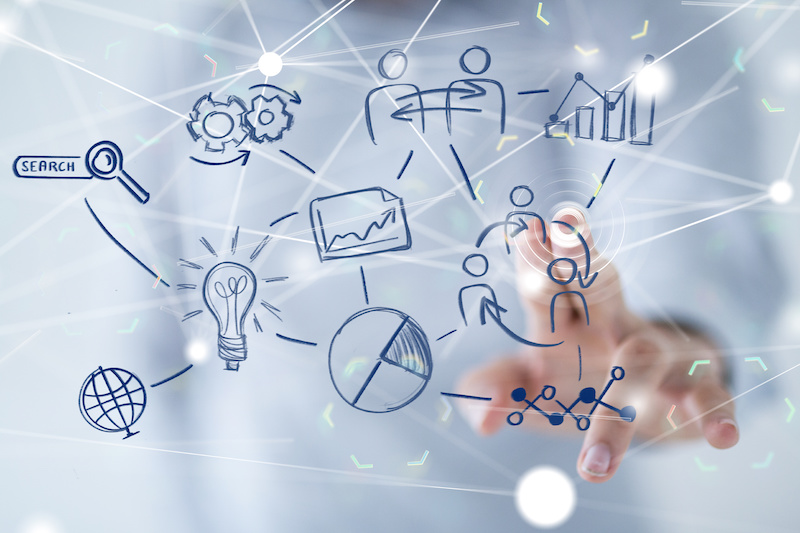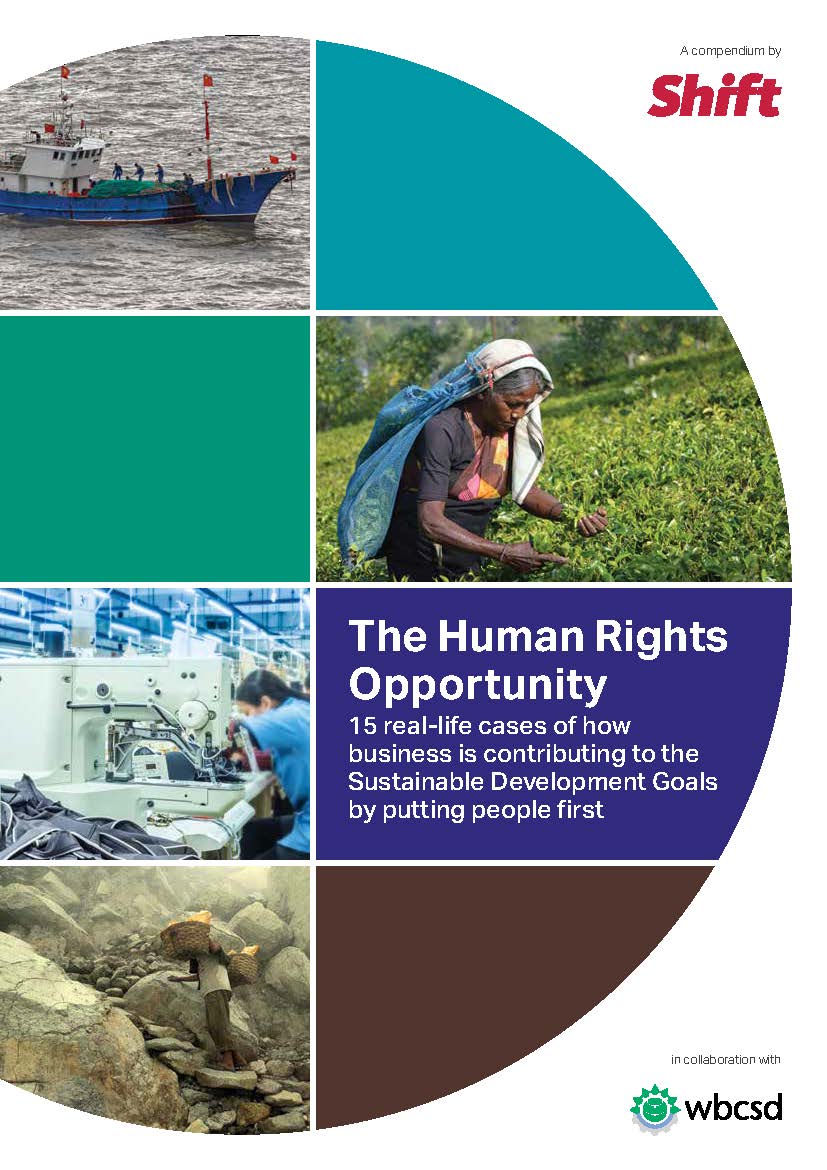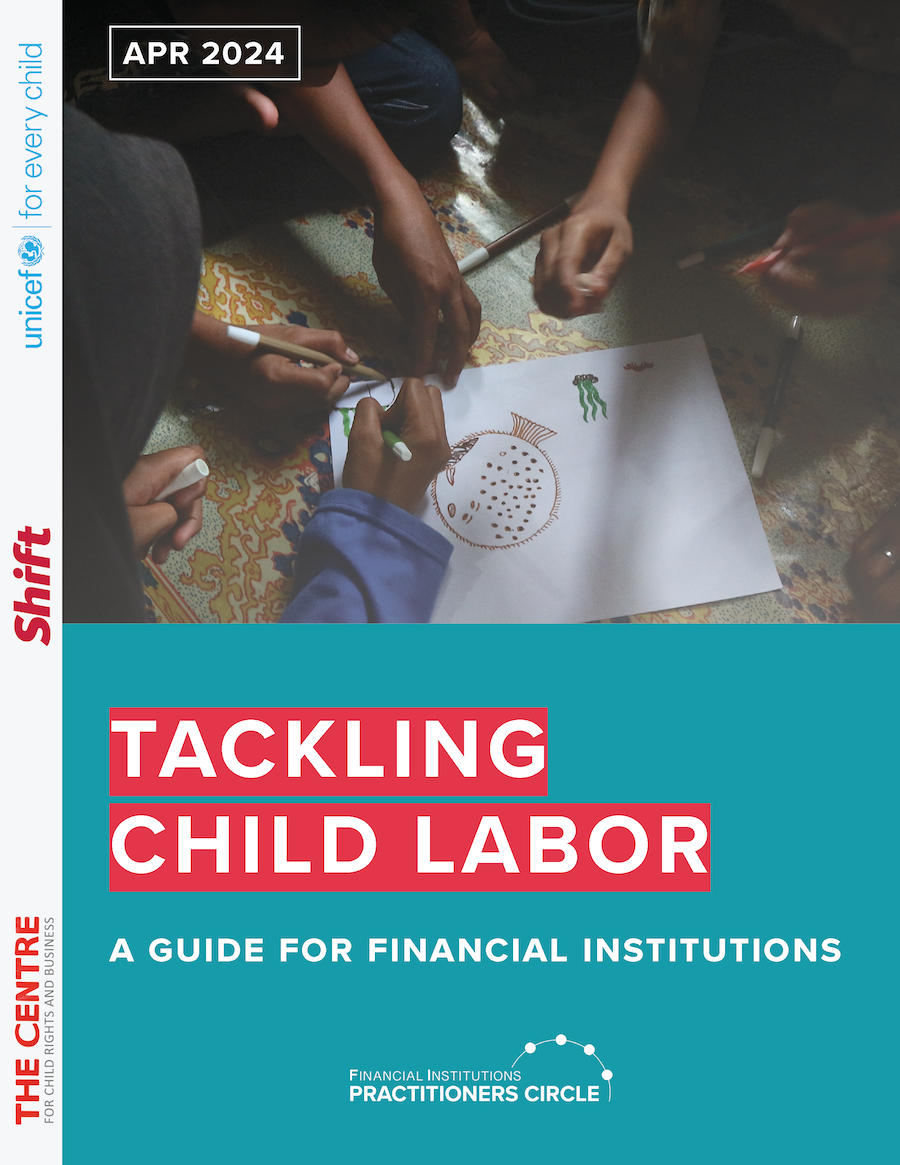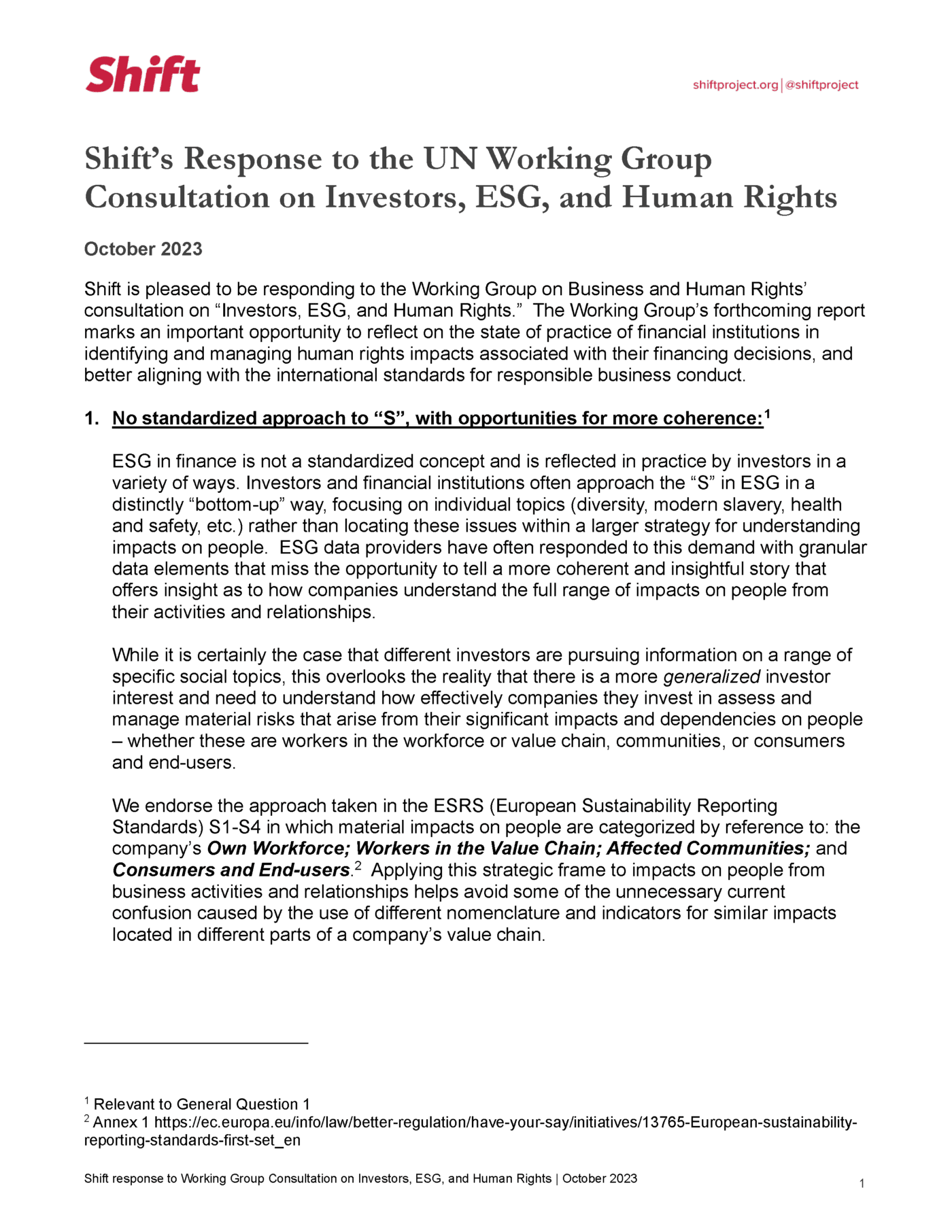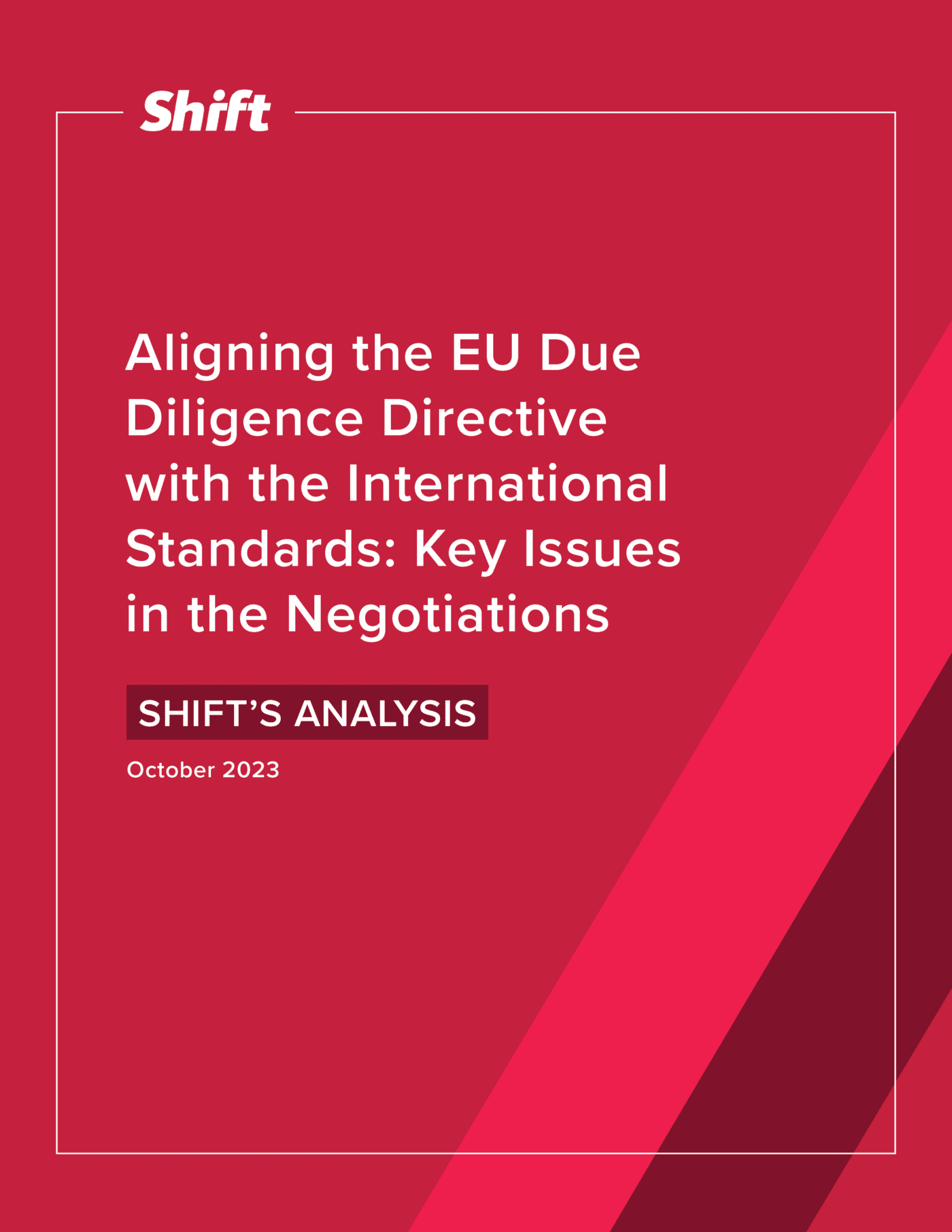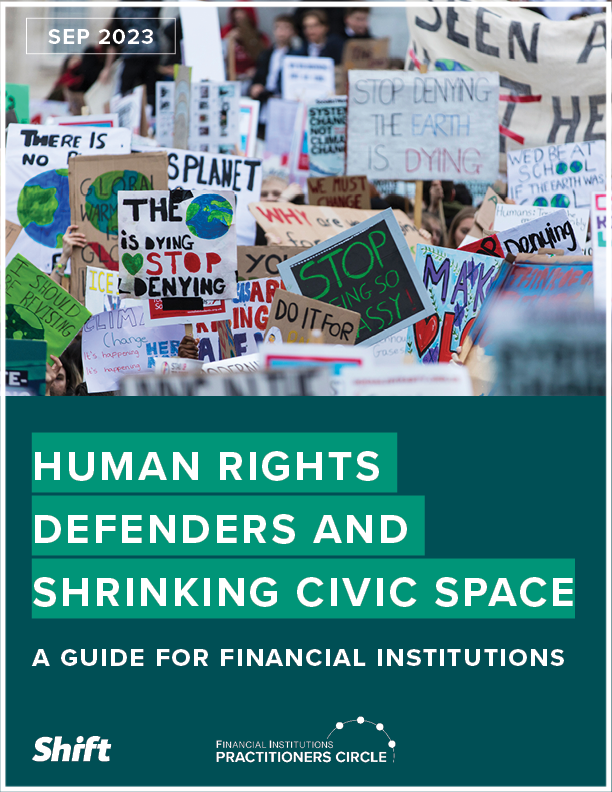Looking at the Sustainable Development Goals through the lens of business and human rights
An increasing number of companies are looking at how they can contribute to the Sustainable Development Goals (also known as SDGs or Global Goals). That is cause for excitement, entrepreneurship and innovation. However, for companies to make a genuine contribution to sustainable development, they need coherent strategies that look at everything they do, and how it affects both planet and people.
COMPANIES ARE USED TO TAKING A WHOLE PICTURE APPROACH FOR THE “PLANET PART” OF SUSTAINABLE DEVELOPMENT …
They know that when they reduce their environmental footprint – the negative impacts on the environment – they make a positive contribution to preserving our planet and everything that depends on it. Many companies also find additional opportunities to make contributions by providing “green” products, services and investments that support progress in our world.
… BUT WHEN IT COMES TO THE “PEOPLE PART”, THEY OFTEN MISS THE MARK
Business leaders interested in contributing to the SDGs often jump straight to innovations that can both make money and contribute to society. While it is important that they do so, they often miss something critical: they forget to think about risks to people connected to their business.
Addressing risks to people is fundamental to advancing the SDGs
In discussions about how business can advance sustainable development, we often see respecting human rights treated as a mere compliance exercise, or as simply “doing no harm”. This underestimates the huge potential for positive impacts on peoples’ dignity and welfare by preventing and addressing human rights risks. Rather, preventing and addressing human rights risks is a critical way to help advance sustainable development. For example:
- When companies address gender-related impacts in connection with their business, they could be helping achieve up to eleven Sustainable Development Goals simultaneously.
- Providing workers with a living wage could help advance eleven Sustainable Development Goals.
- When a company works to eradicate forced labor from its value chain, it isn’t simply complying with a requirement. It could also be helping advance six Sustainable Development Goals.
“The Human Rights Opportunity” resource provides examples of how companies and their stakeholders have worked together to prevent and address human rights risks and, by doing so, have boosted their contributions to the SDGs.
Putting human rights at the center of your SDGs strategy
In order to adopt a coherent and effective approach that maximizes their contributions to what the world needs, companies need to place human rights at the center of their SDG strategies and activities.
This means that businesses need to think about the people part of sustainable development just like they do the planet part.
First, companies should work out where the salient (most severe) risks to people and planet are within their operations and value chains and map those priorities to the most relevant SDG goals and targets. Then, they need to find ways to tackle those risks in ways that maximize positive outcomes and therefore support the Global Goals.
Second, companies should see if and how they could provide beneficial products, services or investments that can bring positive impacts to people and planet and thereby contribute to the SDGs. However, they must make sure to develop and deliver those new innovations with respect for people and planet along the way.
By bringing these two steps together, a company can develop a strategy for the SDGs that enables it to prioritize its efforts and be true to its business, what it does, where it works, and how it impacts people in the most practical sense; a strategy that is principled, coherent and capable of bringing our world closer to a sustainable future.
